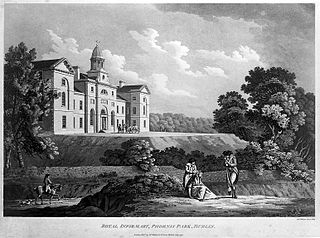 W
WThe Batería de la Atunara was an artillery battery in La Línea de la Concepción, Spain. Constructed by the Spanish military in 1735, it served as part of the line of defenses in the Gibraltar area. It was built by the Government of Spain in fear that the British Overseas Territory would spread over the isthmus.
 W
WThe Castell del Patriarca was a castle that was in the city of Tarragona (Spain). Located from the street Mercería covered up much of the streets of Cocas, de San Lorenzo and the Nueva del Patriarca descent. Its construction was begun in the 12th century by Archbishop Bernat Tort, who built up the height of the second floor, and was completed by the Archbishop Bernat de Olivella in the 13th century. The result was a manor fortress in which lived all the prelates of the Tarraconense headquarter until the early 19th century, when Archbishop Romuald Mon moved to the new palace during his prelature.
 W
WCastle Alcázar of Segorbe was an alcázar located on the slopes of Sopeña in the town of Segorbe, in the Valencian Community of Spain. Very little remains of the original alcázar, but the large complex was a residence of lords, dukes and kings for over a millennium.
 W
WThe Castle of San Jorge was a medieval fortress built on the west bank of the Guadalquivir river in the Spanish city of Seville (Spain). It was also used as headquarters and prison for the Spanish Inquisition. It was demolished in the 19th century and made into a food market. A museum in the underground ruins focuses on the history of the castle, the Spanish Inquisition and of religious repression. Next to the food market in the Barrio de Triana, the Alley of the Inquisition, which was part of the fortifications, now connects Castilla Street with the Nuestra Señora de la O Walk.
 W
WCrail ; Scottish Gaelic: Cathair Aile) is a former royal burgh, parish and community council area in the East Neuk of Fife, Scotland.
 W
WThe Fort de El Tolmo was a fort located in Algeciras, Spain. It was declared Bien de Interés Cultural in 1985. Only large ruins remain.
 W
WFuerte de Punta Carnero was a fort near Algeciras in Spain. It was built before 1735 and was destroyed in 1810 to deny it to the French. Today all that remains are ruined foundations which are a registered Bien de Interés Cultural landmark.
 W
WFuerte de San García was a fort in Algeciras, Spain, It was built in the 1730s and destroyed in 1811 to deny it to the French. Today all that remains are the foundation and base ruins, in the Parque del Centenario, but it is a registered Bien de Interés Cultural landmark
 W
WFort d'Issy was one of the fortifications of the city of Paris, France, built between 1841 and 1845. It was one of six forts built to the south of the main wall around the city. The fort was placed too close to the city to be effective, and had a poor design that did not take into account recent experience of siege warfare. It was quickly silenced during the Franco-Prussian War of 1870–71. After the armistice of February 1871 the fort was defended by National Guards of the Paris Commune against the French regular army in April–May 1871. The defense was irresolute and the fort was soon occupied. Today the site of the fort is an "eco-district", an ecologically friendly residential area.
 W
WThe Lines of Contravallation of Gibraltar, known in English as the "Spanish Lines", were a set of fortifications built by the Spanish across the northern part of the isthmus linking Spain with Gibraltar. They later gave their name to the Spanish town of La Línea de la Concepción. The Lines were constructed after 1730 to establish a defensive barrier across the peninsula, with the aim of preventing any British incursions, and to serve as a base for fresh Spanish attempts to retake Gibraltar. They played an important role in the Great Siege of Gibraltar between 1779 and 1783 when they supported the unsuccessful French and Spanish assault on the British-held fortress. The siege was ended after the lines of contravallation were attacked by British and Dutch forces under the command of the Governor of Gibraltar,General Augustus Eliot. The attack caused the Spanish forces to retreat and abandon the fortifications and the combined British led forces virtually destroyed all the Spanish gun batteries and the enemy cannon and munitions either captured or destroyed. This attack is still commemorated to this day and is known as 'Sortie Day'.
 W
WThe Royal Alcázar of Madrid was a fortress located at the site of today's Royal Palace of Madrid, Madrid, Spain. The structure was originally built in the second half of the ninth century by the Muslims, then extended and enlarged over the centuries, particularly after 1560. It was at this time that the fortress was converted into a royal palace, and Madrid became the capital of the Spanish Empire. Despite being a palace, the great building kept its original title of Alcázar.
 W
WThe Royal Military Infirmary (RMI) in Dublin was located at the southeastern edge of Phoenix Park, one of several former British military installations in the area. The hospital buildings are now part of the Irish Department of Defence's estate and currently houses Ireland's Office of the Director of Public Prosecutions. The bulk of the British Army's medical services in Dublin were transferred from the RMI to a new hospital at Arbour Hill in Dublin in 1913. The Infirmary buildings are protected as they are nationally significant architecture.